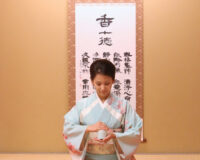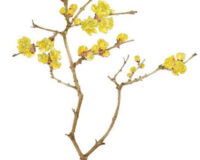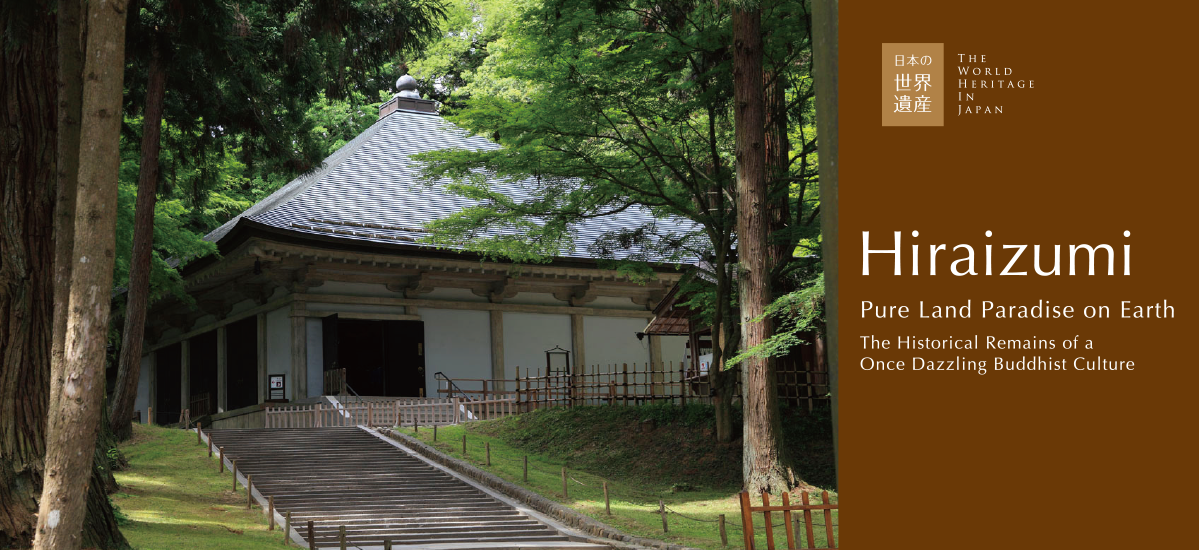
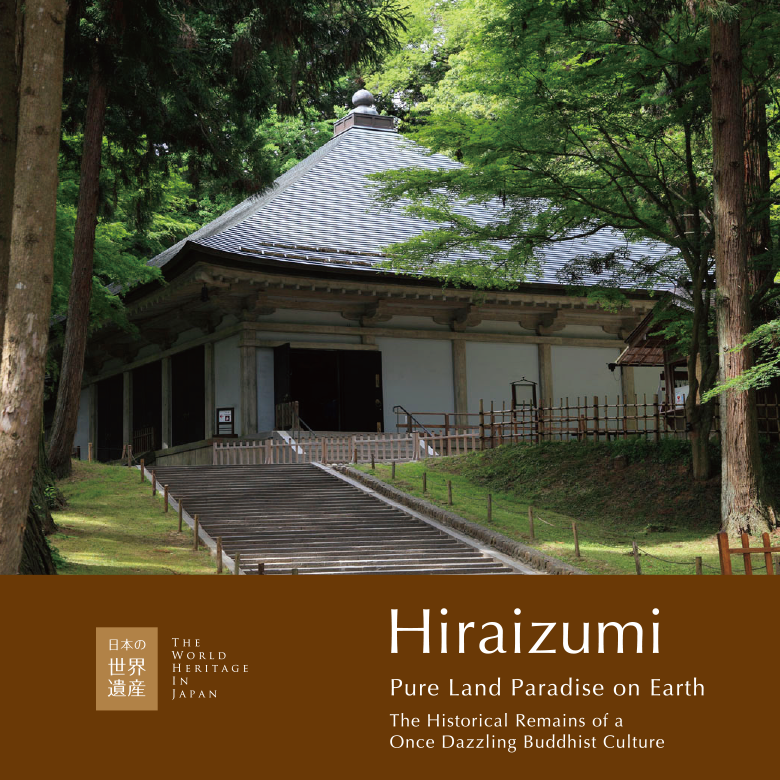
Hiraizumi, Iwate Prefecture. Nine hundred years ago in Japan’s northern Mutsu Province, far from the political and cultural centre of Kyōto, a dazzling culture based on Buddhist teachings once blossomed and flourished. The Ōshū Fujiwara clan created the town of Hiraizumi in the late Heian Period as the earthly manifestation of the Buddhist Pure Land paradise. Long buried and only dimly remembered, the remains of the gardens and architectural ruins that symbolised that culture were designated a UNESCO World Heritage Site in 2011.
Text : Yūji Fujinuma / Photo : 青柳健二 Kenji Aoyagi / English Version : Judy Evans
Keyword : Hiraizumi / Chūson-ji Temple / Japan World Heritage / Heian Period / World Heritage Sites / Japanese Gardens / Mōtsū-ji Temple
A Strategic Location for the Capital of Kiyohira’s New Domain
Having emerged victorious in 1094 from twelve years of war that devastated the region, Fujiwara no Kiyohira had come to control the entire Tōhoku region (the northernmost six prefectures of Honshū). In order to govern such a vast area, it made sense to base himself in the centre.
After having marker stones placed at one chō (109-metre) intervals along the route from the Shirakawa Barrier in the south of Mutsu Province to the tip of the Tsugaru Peninsula at the northern end of Honshū, Kiyohira was able to determine that Hiraizumi was, indeed, right in the centre of his new domain. Bisected by the Kitakami River, the town had since ancient times been of strategic importance for land and water transportation. Deciding to relocate to Hiraizumi, Kiyohira set about recreating the town as a Buddhist Pure Land paradise on earth.

From Cultural Backwater to Purveyors of the Finest Local Products
Japan’s cultural and political elite in faraway Kyōto viewed Mutsu Province as a real cultural backwater, a prejudice that Kiyohira sought to conquer, not through military force but by building a culture to rival that of the capital. This vision was not limited to just Hiraizumi. Kiyohara’s dream, which was taken up successively by his son, Motohira, and grandson, Hidehira, was to bring peace based on Buddhist principles to the whole of Mutsu Province.
As wild and remote as it was, Mutsu Province was Japan’s only gold-producing region and possessed fabulous natural resources that were very much in demand among the rich and powerful of Kyōto. These resources included excellent horses, fine paper and lacquer, silk cloth and all types of leather products. Mutsu was also the conduit for products such as seal skins, and falcon and eagle feathers from even wilder northern locations like Hokkaidō and Sakhalin. Kiyohira’s vision would require extensive resources, so he set about establishing financial stability for the province by providing patronage and management of the region’s specialty products, and ensuring a stable supply chain through to the capital.
The people of Kyōto, in turn, were delighted by the luxury goods arriving from Mutsu. Lured by this wealth of products gathered from all over the province, merchants from throughout Japan flocked to Hiraizumi and the town was transformed into a bustling centre of trade.

Chūson-ji Temple and its Dazzling Golden Mausoleum
Kiyohira began his flagship temple-building project, Chūson-ji Temple (one of the properties included in the world heritage listing) in 1105. This grand monastery and temple complex, which took twenty-one years to complete, was created to placate the souls of those who died during the twelve years of war prior to Kiyohira gaining control of the province. The site is thought to have previously been the location of Kōdaiji-in, a temple believed to have been established by the famous priest, Ennin, in 850.
There are several theories regarding the origin of the name, Chūson-ji, chosen by Kiyohira for his temple complex. The name is made up of three characters and can be interpreted as meaning “centre”, “exalted” and “temple”. Perhaps the choice of name relates to Chūson-ji’s location in the centre of Mutsu Province but also, perhaps, Kiyohira believed that this temple complex was central to his plan to build a Buddhist realm in Mutsu.
According to a description in the Azuma Kagami, a medieval chronicle, Chūson-ji at its height was a temple complex on a grand scale, boasting forty temple buildings and three hundred priests’ living and meditation quarters. Most noteworthy among all these buildings was the Konjikidō, a golden jewel of a structure that inspired poet Matsuo Bashō, hundreds of years later in the 1600s, to write “samidare no/ furi nokoshite ya/ hikari-dou” (centuries of rain/ have not dimmed the glitter of/ this great hall of light). About five and a half metres square, the Konjikidō, a small temple hall dedicated to the Amida Buddha, combines the most sophisticated arts and crafts techniques of the late Heian Period and is considered a masterpiece. Apart from the roof, the entire structure is coated inside and out in black lacquer and completely covered in gold leaf. Every square inch of the inner sanctum is detailed and intricate, and just as splendid as Amida’s Pure Land paradise.

The best metal workers, goldsmiths and lacquer artists from Kyōto were brought to Hiraizumi to work on the Konjikidō, which took fifteen years to construct and was completed in 1124. The building was intended as Kiyohira’s mausoleum and when he died four years after its completion, his body was placed in a coffin and enshrined here. His son and grandson were also enshrined here after their deaths, a style of burial so unusual for Japan that there are no other known instances of this type of burial occurring.
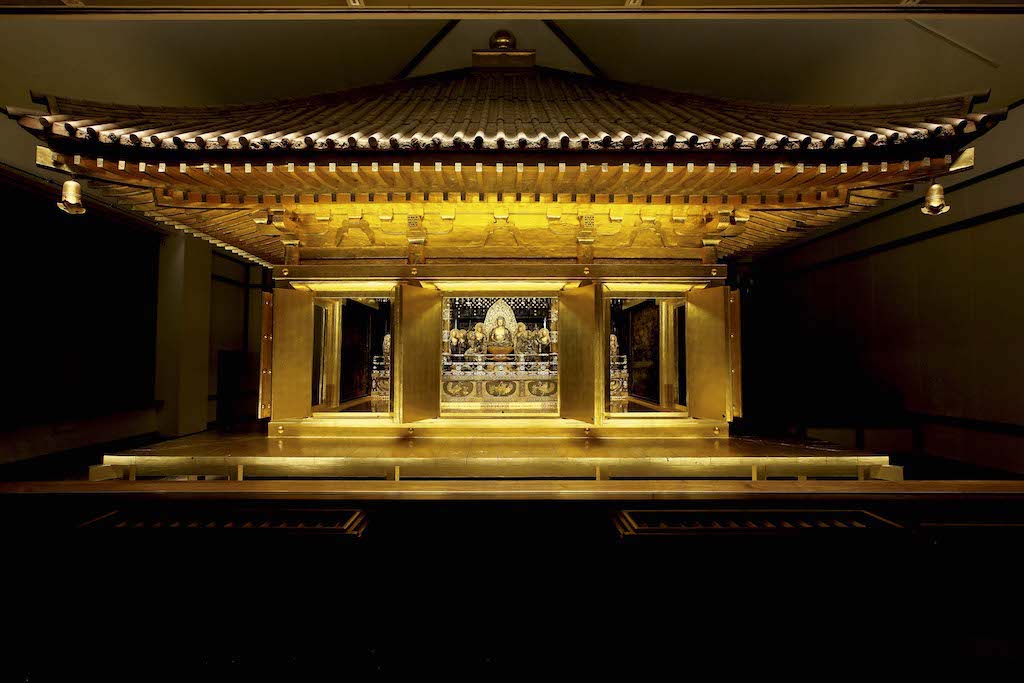
Paradise Lost as the Fujiwara Fall
Another property that forms part of the Hiraizumi World Heritage listing is Mōtsū-ji Temple, of which little more than the classical Heian Period garden remains. Like Chūson-ji, Mōtsu-ji was believed to have originally been established by the priest, Ennin. The building project was started by Kiyohira’s son, Motohira, and continued by third generation ruler, Hidehira. By the time it was completed, Mōtsu-ji exceeded Chūson-ji in scale, boasting forty temple halls and five hundred priests’ quarters.
To the east of Mōtsū-ji, Motohira’s wife built the temple, Kanjizaiō-in, while Hidehira built Muryōkōin to the west of Mōtsū-ji. Modelled on Byōdōin Temple in Uji, Kyōto, Muryōkōin commanded views of the sacred hill, Kinkeizan, to the west. These temple remains, which are believed to have been built in the Heian Period shinden-zukuri style of palace architecture, along with their Pure Land paradise gardens, are all part of the World Heritage listing.

Another property that forms part of the Hiraizumi World Heritage listing is Mōtsū-ji Temple, of which little more than the classical Heian Period garden remains. Like Chūson-ji, Mōtsu-ji was believed to have originally been established by the priest, Ennin. The building project was started by Kiyohira’s son, Motohira, and continued by third generation ruler, Hidehira. By the time it was completed, Mōtsu-ji exceeded Chūson-ji in scale, boasting forty temple halls and five hundred priests’ quarters.
To the east of Mōtsū-ji, Motohira’s wife built the temple, Kanjizaiō-in, while Hidehira built Muryōkōin to the west of Mōtsū-ji. Modelled on Byōdōin Temple in Uji, Kyōto, Muryōkōin commanded views of the sacred hill, Kinkeizan, to the west. These temple remains, which are believed to have been built in the Heian Period shinden-zukuri style of palace architecture, along with their Pure Land paradise gardens, are all part of the World Heritage listing.
Hiraizumi’s Pure Land Gardens – Windows onto the History of Japanese Garden Design
Hiraizumi’s official World Heritage Site title is Hiraizumi – Temples, Gardens and Archaeological Sites Representing the Buddhist Pure Land. It comprises five sites: Chūson-ji (consisting of Konjiki-dō and the old temple building that once covered it, as well as the Kyōzō Sutra Repository and the former pond); Mōtsū-ji (consisting of the Pure Land garden and Jōgyōdō hall); Kanjizaiō-in Temple Remains; Muryōkō-in Temple Remains; and the sacred hill, Kinkeisan. Located in the centre of Hiraizumi, Kinkeisan has visual links to the other four sites, forming part of the background “borrowed landscape” of these Pure Land gardens.

The connection to Buddhist principles was key to these properties’ designation as a World Heritage Site. Konjikidō and the Pure Land gardens in particular are described as symbolic manifestations of the Buddhist Pure Land here on earth. The four Pure Land gardens of Hiraizumi (the pond at Chūson-ji, Mōtsū-ji Teien Garden, Kanjizaiō-in and Muryōkō-in) are of particular importance for the way they combine the imported ideals of Pure Land Buddhism with native Japanese ideas about nature and how gardens and water should relate to the surrounding landscape.
Mōtsū-ji Teien garden is the only historical and archaeological site in Japan from the Heian Period where the entire garden and pond, including the stream that feeds the pond, have been excavated in an almost perfect state, making it of great value to the study of garden history. The garden at Mōtsū-ji was laid out according to instructions set out in the Sakuteiki, an 11th century garden design manual. Unlike Heian Period palace gardens, which were places for merrymaking, the Pure Land garden represents paradise itself. The gracefully curved edge of the pond at Mōtsū-ji symbolises the shores of paradise, while rocks placed in the pond represent Mount Sumeru, the mythical Buddhist mountain.
Although the five properties that comprise the World Heritage Site at Hiraizumi were recognised by UNESCO in 2011, efforts continue to have five further properties in and around Hiraizumi, including Yanagi-no-Gosho (the remains of the Fujiwara palace and administrative offices) added to the World Heritage Site registration.




